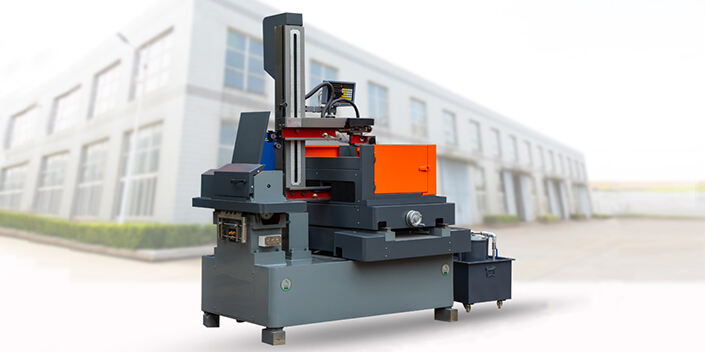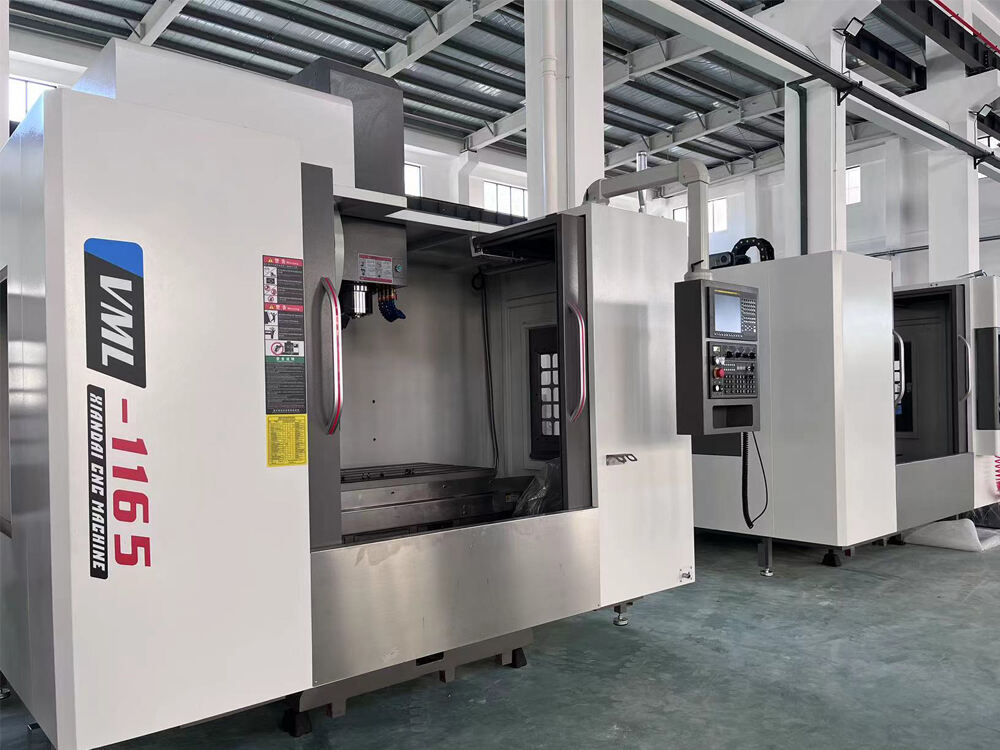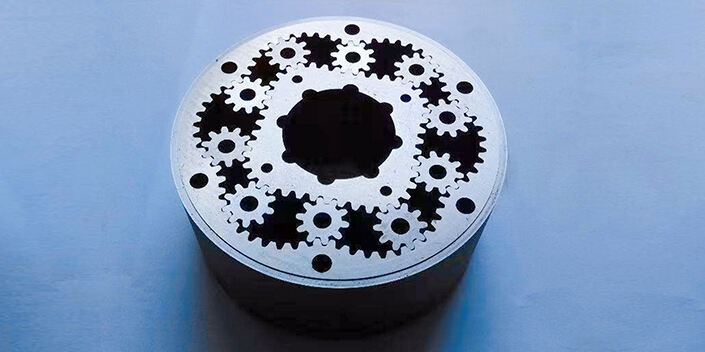Fundamentals of Precision Thread Cutting on a Lathe Machine
Understanding Thread Geometry & Tolerances
When talking about precision thread cutting, thread geometry plays a key role in making sure everything fits together properly. There are three main measurements to consider here: major diameter, minor diameter, and pitch diameter. The major diameter basically measures how big the outside of an external thread is, whereas the minor diameter looks at the smallest part inside an internal thread. What really matters though is the pitch diameter because this determines whether threads will actually work when mated together. Keeping all these dimensions within tight specs allows manufacturers to produce parts that fit correctly during assembly processes and meet those important industry standards we all have to follow. And let's not forget about tolerances either. These aren't just numbers on paper they're absolutely essential for reliable products. Proper tolerancing prevents problems where threads either bind too tightly or slip apart completely, which nobody wants to deal with during installation or maintenance.
How threads are formed makes all the difference when parts need to fit together properly, which directly impacts how well机械设备 works. The shape of a particular thread dictates how it meshes with other components, and this affects things like where pressure gets distributed across surfaces, how strong the connection remains under stress, and how long before friction starts wearing materials down. Getting these fine points right means better designs that actually work as intended across different machinery applications. Those measurements we take for thread shapes aren't just numbers on paper either. They really matter because even small deviations can cause big problems once equipment is running at full capacity in real world conditions.
Role of Lathe Machine Dynamics in Thread Accuracy
When working with lathe machines, factors like spindle speed and feed rates really matter for getting good thread quality. How these two elements work together affects how well the cutting tool does its job, which in turn impacts whether the threads come out smooth and accurate. Getting the settings right makes all the difference in thread quality. If they're off even slightly, the results can be disappointing. Most machinists know from experience that finding the sweet spot between these settings leads to cleaner cuts and fewer problems with defective threads down the line.
Controlling machine vibrations matters a lot for keeping things accurate when cutting threads on lathes. When there's too much shaking going on, the tools start wandering off course, leading to all sorts of mistakes in the final product. There are several ways to tackle this problem in real workshops these days. Some shops install special stabilization systems while others go for damping solutions that absorb those unwanted movements. The difference between good and bad setups shows up clearly in the actual thread quality. Shops that spend time getting their machines properly balanced tend to produce much better results overall. For anyone working in manufacturing, getting this right isn't just nice to have it's absolutely necessary if they want to meet industry specs and deliver parts that actually work as intended.
Advanced Thread Cutting Techniques for Modern Machinists
Single-Point Threading vs. Thread Milling
Precision thread cutting involves two main approaches each with their own strengths. Single point threading works well on lathes and remains popular among shops doing smaller runs because it's straightforward to set up and operate. Thread milling takes a different approach using rotating tools that give machinists more options when dealing with tricky shapes. The real advantage here becomes apparent when making internal threads from scratch rather than starting with existing holes, which saves time on the shop floor. Looking at the bottom line matters too. For big production runs where tool wear gets expensive, thread milling often cuts down on replacement costs. While single point methods might win out for basic jobs, experienced machinists know thread milling shines brightest when tight tolerances matter most and parts need multiple variations.
Overcoming Material Challenges with Wire EDM Integration
Combining wire electrical discharge machining (EDM) with standard machining practices offers a solid way to handle those really tough materials that resist normal cutting methods. What makes wire EDM stand out is how it can create intricate shapes with amazing accuracy without actually touching the material being worked on, so there's hardly any tool wear at all. Take the aerospace sector for example they rely heavily on wire EDM when making parts from stuff like titanium and Inconel, which are basically impossible to work with using regular tools. From what we've seen in shop floors across different manufacturing plants, EDM not only improves the precision of threads but also cuts down waste materials substantially compared to older methods. The sheer accuracy of this technique gives manufacturers something no traditional approach can match when it comes to getting those perfect threads right first time every time.
Thread Whirling for Complex Aerospace Components
Thread whirling is changing how we make those really complicated threads, particularly important stuff for aerospace parts where getting measurements right matters a lot. Basically what happens is multiple cutting tools spin around whatever part needs threading, which lets manufacturers create all sorts of complex thread profiles while keeping tool wear down to a minimum. When combined with computer numerical control (CNC) systems, this method becomes even better because everything gets automated so each piece comes out consistently precise. Look at how aerospace companies have adopted thread whirling successfully for their critical components that must meet exacting standards. With CNC integration, engineering teams can tweak designs on short notice without sacrificing quality or speed, which explains why so many aerospace shops now rely heavily on this technique for their manufacturing needs.
Optimizing Tooling for Electrical Discharge Machining (EDM) Compatibility
Carbide Tool Selection for High-Temp Alloys
Getting the right carbide tools matters a lot when working with high temperature alloys. These tools stand out because they can handle extreme heat without breaking down, stay hard even under pressure, and resist wearing away quickly. That's why they work so well in hot environments, particularly during processes like electrical discharge machining (EDM). Looking at carbide tools? There are several things worth paying attention to. The shape of the tool itself plays a big role, along with what kind of coating has been applied and the actual quality of the carbide material used. All these aspects really affect how long a tool will last and perform in tough situations. Industry insiders know that carbide tools might cost more upfront compared to alternatives, but most shops find them worth the extra money in the long run. They simply don't need replacing as often, which saves both time and cash, especially when running EDM operations on those stubborn high temp alloys day after day.
Coatings to Reduce Wear in EDM Electrical Discharge Machining
The different types of coatings used on EDM tools make a real difference when it comes to cutting down on wear while also making those tools last longer and work more precisely. Common options out there include things like titanium nitride or TiN for short, then there's titanium carbonitride known as TiCN, and some folks go with diamond coatings too. Each one brings something special to the table regarding how well they resist wearing down and keep operations running smoothly. Studies show these coatings actually do affect how well tools perform because they reduce friction between parts, stop chips from sticking where they shouldn't, and generally improve accuracy throughout machining tasks. Looking at what's happening in coating tech right now, manufacturers are working hard on creating new multi-layer coatings that stand up better against rust and handle heat much better than before. This kind of progress could mean big things for EDM shops everywhere. We might see even less wear on tools over time, which means longer lasting equipment and ultimately much better results when dealing with complicated machining jobs that require extreme precision.
Industry Applications of Precision Thread Cutting
Medical Device Manufacturing: Micro-Thread Demands
Getting the threads just right matters a lot in making medical devices, especially when it comes to those tiny threads needed for parts like bone screws and implants. These micro-thread specs aren't something manufacturers can mess around with since they have to follow strict rules set by groups like the FDA and ISO standards bodies. Take surgical instruments for example they need those exact threads to come together properly and work correctly during procedures. The importance of this becomes clear when looking at actual products on the market. Minimally invasive tools used in delicate operations and long lasting implants all depend on getting those threads spot on to keep patients safe and make sure the devices last as intended without failing down the road.
Automotive Transmission Systems: High-Volume Production
For automotive transmission systems, getting those precision threads right matters a lot because manufacturers need to produce thousands of parts while still hitting tiny accuracy targets. Keeping things accurate when making so many components isn't easy at all. Small mistakes can cause big problems down the road. Most auto makers rely on some serious stats tracking to keep their production lines running smoothly and defects to a minimum. Industry data shows that top performers aim for defect rates below 0.005%, which means companies must invest in really good thread cutting tech if they want to stay competitive in this tough market.
Aerospace Fasteners: Meeting AS9100 Standards
AS9100 standards play a huge role in aerospace manufacturing, especially regarding fasteners. Getting those threads cut right matters a lot if companies want their products to pass inspection. The aerospace industry demands parts that won't fail under pressure, both literally and figuratively. When manufacturers skip over these requirements, real problems happen. We've seen cases where improper fastening led to serious issues mid-flight. That's why compliant fasteners get made with such tight tolerances they can handle what planes throw at them. Take titanium bolts for instance. These little components hold together sections of modern aircraft while enduring temperatures that would melt ordinary materials. Every manufacturer knows the deal: precision isn't just nice to have, it's absolutely necessary for keeping everyone safe up there.
Mastering Tolerance Control in Thread Production
Compensating for Thermal Expansion Effects
When it comes to threads, thermal expansion really messes with dimensions, which means good tolerance control isn't just nice to have but absolutely essential for proper function. As anyone who works with metal knows, machining generates plenty of heat, and that heat makes materials expand all over the place. Sometimes parts end up way off spec because of this expansion issue. The main way shops fight back against thermal expansion? Keeping things cool in the workshop itself. A stable shop temperature helps keep those pesky expansions and contractions at bay. Many manufacturers go further by installing high-tech cooling systems right on their machines. These systems suck away excess heat as it builds up during cutting operations, helping maintain those crucial thread specs. Industry pros tell us that getting serious about calculating expansion rates and making small adjustments during machining is what separates good results from great ones when producing precision threads.
In-Process Measurement with Smart Tooling Systems
Smart tooling has changed the game for machinists when it comes to getting those tight tolerances right during thread manufacturing. With built-in measurement capabilities, these advanced systems give operators instant feedback while the part is still on the machine. When something starts going off track, workers can tweak settings right away instead of waiting until after production. What makes these tools so valuable? They spot tiny deviations from specs almost immediately, which cuts down on scrap parts before they even happen. Shops that adopted this tech, such as ARCCOS and Zoller, saw real results in their shops. Thread dimensions became consistently better across batches, and floor managers noticed fewer rejected components piling up at inspection stations. Looking at actual shop floor data, companies report double benefits from these systems. Quality improves obviously, but there's another hidden win too many don't talk about enough – those saved hours from not having to fix mistakes later in the process really adds up over time.




